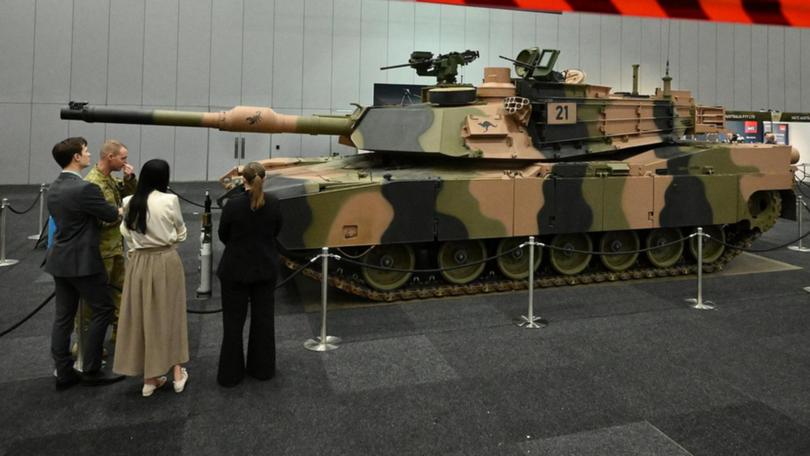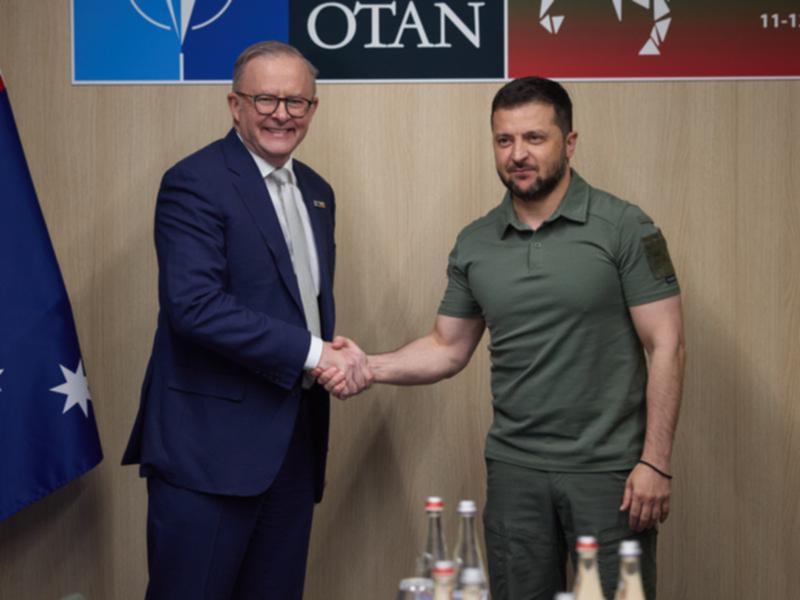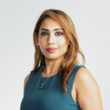LATIKA M BOURKE: Australia's gift of tanks to Ukraine raises question of why it didn’t happen sooner
What took you so long was the immediate question to Australia’s Defence Industry Minister Pat Conroy as he announced that the government would send its ageing M1 Abrams tanks to Ukraine.
The announcement, which constitutes Australia’s most significant military contribution to Kyiv and one of the largest allocations of tanks from an ally, was oddly made at a low-key early-morning press conference by the minister who was in London for a brief stopover en route to Brussels to NATO to attend the first Defence Ministerial involving the Indo-Pacific 4 countries.
Ukraine has been asking for the tanks for more than 12 months following the ridiculous scenario that played out earlier this year when the Australian government chose to bury decommissioned Taipan helicopters instead of sending them to Ukraine.
Sign up to The Nightly's newsletters.
Get the first look at the digital newspaper, curated daily stories and breaking headlines delivered to your inbox.
By continuing you agree to our Terms and Privacy Policy.So Australia’s donation was both a relief and very welcome.
Ukraine’s President Volodymyr Zelensky described the gift as “brave” and the Australian Ukrainian community said it was thrilled.
“Never used in combat, the retired tanks will be a much-welcomed addition to Ukraine’s fighting capacity,” said Kateryna Argrou, co-chair of the Australian Federation of Ukrainian Organisations.
“They will help Ukraine’s soldiers continue the defence of their nation and be a tangible sign of support from a fellow democracy many thousands of kilometres away.
“Where Australia no longer needs retired ADF equipment, its benefit to Ukraine can be enormous.
“Ukraine remains outmanned and outgunned in its fight to defend itself against Putin’s aggression.”

Importantly, Ukraine is free to use American-made Australian-owned battle tanks in Russian territory.
“As a matter of principle for all our material we place no restrictions on their use by the Ukrainian armed forces as long as it’s consistent with international, humanitarian law,” Conroy said.
“That’s a matter for the valiant Ukrainian military to deploy them to the best effect to counter the illegal invasion on their territory.”
Ukraine’s Ambassador to Australia Vasyl Myroshynchenko said the tanks would be used by the mechanised infantry brigades of the ground forces of the Armed Forces of Ukraine (AFU) who are engaged along a 1400-long kilometre front – roughly the distance between Sydney and Adelaide.
“Combat assaults by the Russian Federation on Ukraine and Ukrainians have increased by some 20 per cent in the last three months to their highest level in 2024,” he said.
“Only this week, the Russian aggressor conducted an air strike on Ukrainian cities and towns involving nearly 140 drones and missiles.
Later, US President Joe Biden, after speaking to Zelensky by telephone, announced a fresh surge of military equipment which included munitions, air defences and armoured vehicles worth US $425 million.
“The leaders committed to intensify security assistance planning alongside international partners in order to ensure that Ukraine has the equipment it needs to prevail,” the White House readout said.
It also came on the same day that Zelensky presented his peace plan to Ukraine’s parliament which requested an “unconditional invitation, right now” to join NATO and the deployment of a non-nuclear deterrence in Ukraine.
NATO’s new boss Mark Rutte said Ukraine would join the alliance “when the time is right”.
There will be a round of backslapping and self-congratulation for standing up for the “rules-based order” following the newly announced support for Ukraine but the situation is grim and one of the West’s own making.
In Australia’s case, it appears to be finally emerging from a period of deliberate inertia.

While a middle power’s self-imposed strategic somnambulance should not be excused, it can be overlooked given it is not a game-changing player.
But the costs of the Biden Administration’s hesitation and the incoherence of Western Europe, particularly Germany, are still to be fully realised.
Europe and the United States once baulked at sending battle tanks to Kyiv, worried doing so might provoke Russian President Vladimir Putin into expanding his war against Ukraine and drawing in NATO.
But in reality, every red line the West has set itself, from tanks to missiles to fighter jets has been crossed with no escalation, nuclear or otherwise, from Putin.
Geopolitically, tying Ukraine’s hands behind its back has allowed a loose alliance of authoritarians in Russia, China, Iran and North Korea to form and increase their collaboration in aiding and supplementing Russia’s war effort.
This week, it was reported that North Korea was supplying troops to Russia for its war.
“This idea of North Korean soldiers fighting on behalf of Russia, we believe, if true, would mark a significant increase in the DPRK and the Russia defence relationship,” John Kirby, White House National Security Communications Adviser, said this week.
“A relationship I would remind that we’ve been talking about now for many months as burgeoning and growing and deepening.
“And this, if true, would represent a significant deepening of that relationship.”
But the deepening relationship has been enabled by allowing Ukraine to bleed but not win.

Ukraine has made some significant gains, such as bringing the Russian Black Sea Fleet to heel with little to no Navy and the audacious incursion across the border into Russia in August.
“As matters stand, however, the Ukrainian army appears to have little chance of retaking the territory that Russia has occupied,” Carl Bildt, Sweden’s former foreign minister, wrote for Project Syndicate last month.
“It might well repeat the success of the Kursk operation somewhere along the front lines, which would have important political implications, but achieving sustained results beyond that will be challenging.”
The drip-drip, too-little-too-late approach has been to Ukraine’s cost, hundreds of thousands of lives lost and millions more shattered. It is the same futility being applied to the hesitation to let Kyiv use Western missiles to strike targets inside Russia.
John Lough of Chatham House says as it stands, Ukraine has four options: a long war, a frozen conflict, victory for Ukraine and defeat.
“Barring a mutiny by Russian forces or a crisis in Moscow, the prospects for Ukraine (and therefore Europe) look grim,” said Tim Willasey-Wilsey, senior associate fellow at RUSI.
“What remains now for Europe is to secure a place at the negotiating table and to argue for NATO membership for Ukraine as part of any settlement.
“Failing that, the West will have years to repent the betrayal of the courageous Ukrainians, whose only crime was their wish to join the Western democratic order.”

